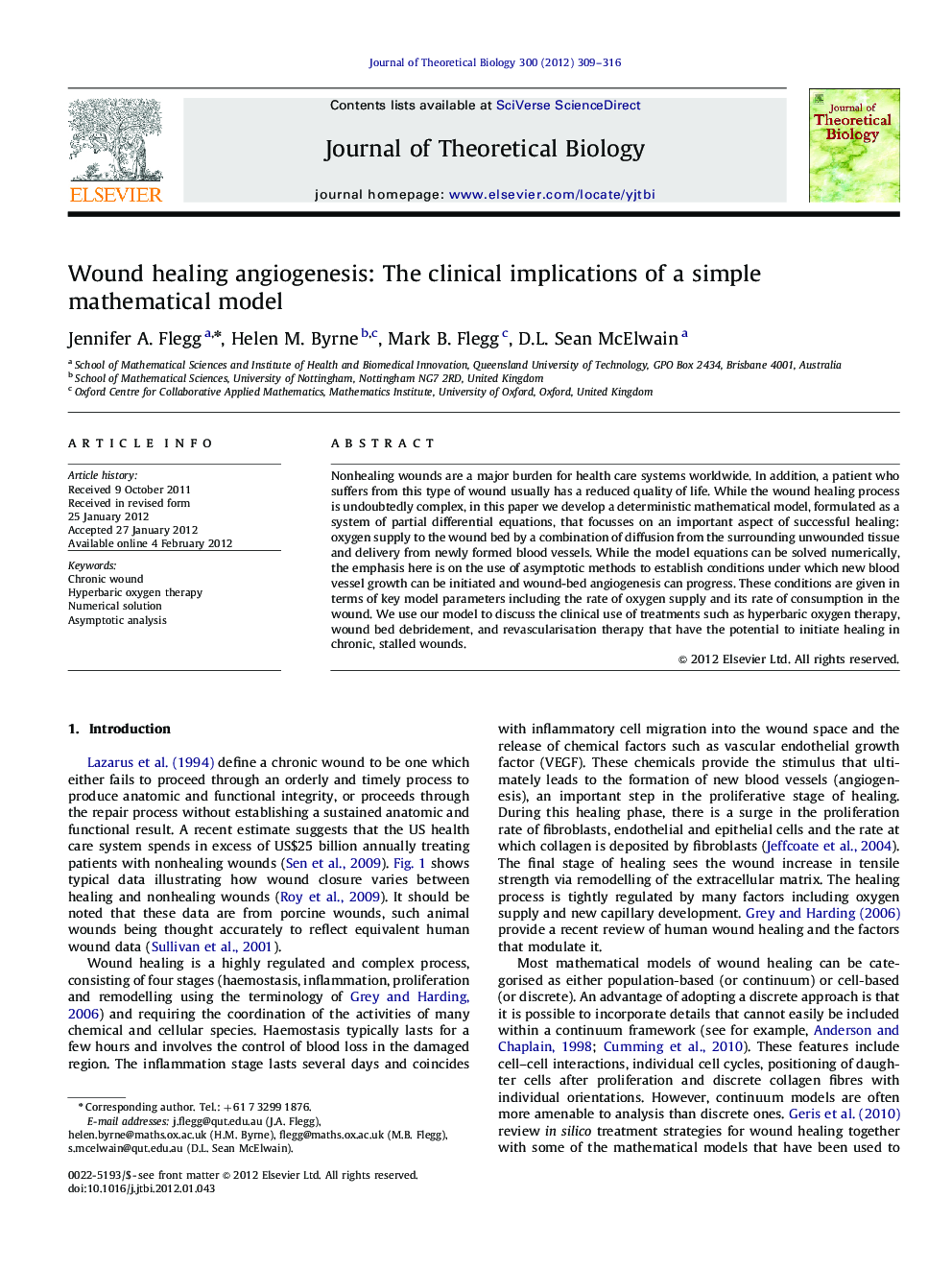| Article ID | Journal | Published Year | Pages | File Type |
|---|---|---|---|---|
| 4496775 | Journal of Theoretical Biology | 2012 | 8 Pages |
Nonhealing wounds are a major burden for health care systems worldwide. In addition, a patient who suffers from this type of wound usually has a reduced quality of life. While the wound healing process is undoubtedly complex, in this paper we develop a deterministic mathematical model, formulated as a system of partial differential equations, that focusses on an important aspect of successful healing: oxygen supply to the wound bed by a combination of diffusion from the surrounding unwounded tissue and delivery from newly formed blood vessels. While the model equations can be solved numerically, the emphasis here is on the use of asymptotic methods to establish conditions under which new blood vessel growth can be initiated and wound-bed angiogenesis can progress. These conditions are given in terms of key model parameters including the rate of oxygen supply and its rate of consumption in the wound. We use our model to discuss the clinical use of treatments such as hyperbaric oxygen therapy, wound bed debridement, and revascularisation therapy that have the potential to initiate healing in chronic, stalled wounds.
► In this paper, a deterministic mathematical model of wound healing is developed. ► We consider oxygen supply, blood vessels and newly formed capillary buds. ► Conditions are established for successful wound healing. ► We discuss the use of treatments that can initiate healing in chronic, stalled wounds.
